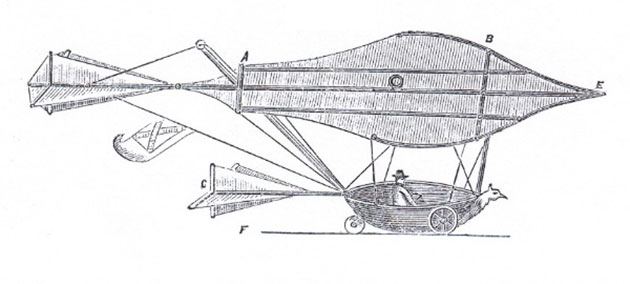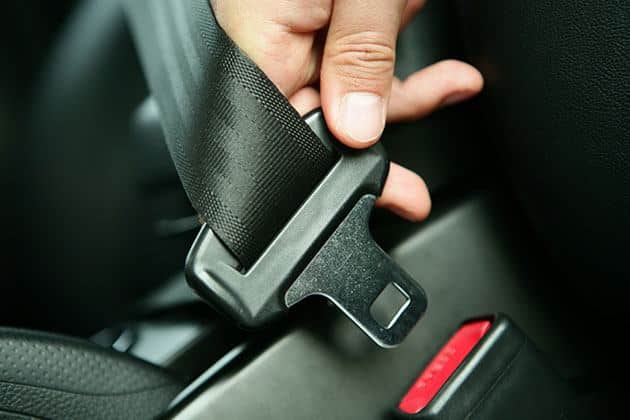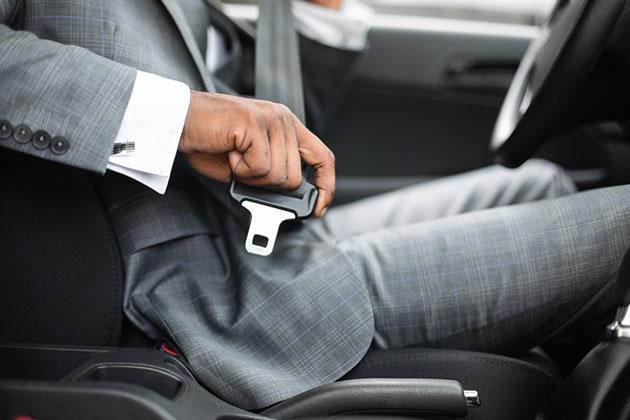Seat belts are the most beneficial safety feature of every vehicle. However, the controversial history of seat belts did not make safety belts mandatory until 1968.
This guide lets you in on all intriguing seat belt history details through a timeline from the seat belt invention to the modern seat belts of the future!
More...
Table of Contents
- The Mid-1800s: The Invention of the Aeronautical Seat Belt
- 1885: Edward J. Claghorn Invents the First Vehicle Seat Belt
- The 1950s: Retractable Seat Belts & Controversial Seat Belt Use
- 1959: Invention of a Three Point Seat Belt
- 1961: The First Mandatory Seat Belt Laws in Wisconsin
- 1968: National Mandatory Seat Belt Law
- The Great Debate of Automatic Safety Belts
- Modern Seat Belts
- Types of Seat Belts
- The Significance of Seat Belts
- How Well Do Seat Belts Save Life?
- Is the Seat Belt Obligatory for Passengers in the Rear Seat?
- How Do Seat Belts Affect Women?
- Has the Coronavirus Impacted the Seat Belt Use?
- FAQs
- Final Words
The Mid-1800s: The Invention of the Aeronautical Seat Belt
The seat belt history can be traced back to the mid-1800s when a wealthy aviator innovator Sir George Cayley, invented the first seat belt. The seat belt invention was used in his flying machine to protect pilots inside.
However, as innovative as the invention was, Cayley dedicated the pattern only for aeronautical purposes.

Source: aviation-history.com
1885: Edward J. Claghorn Invents the First Vehicle Seat Belt
The first automotive industry seat belt dates to 1885, as patented by Edward J. Claghorn.
Claghorn's patent was initially designed to protect New York passengers in taxis. The first safety harness in Claghorn's design was described as "designed to be applied to the person, and provided with hooks and other attachments for securing the person to a fixed object."
During the 1930s, the majority of people began installing their seat belts to prevent the bouncing of the car. However, U.S. physicians demanded car manufacturers implement lap belts in all vehicles.
The 1950s: Retractable Seat Belts & Controversial Seat Belt Use
The first retractable seat belts were introduced in the 1950s when Dr. C. Hunter Shelden studied preventing head traumas in automotive vehicles.
The retractable safety belt was created to lessen internal injuries and head traumas caused by car accidents. Next, Dr. C. Hunter Shelden added a few more safety measurements and features such as roll bars, airbags, adjustable headrests, and recessed steering wheels.
It wasn't until the first half of the 20th century that the seat belt remained a notorious safety feature. Not only were seat belts not mandatory in most states, but people refused to wear them due to the significant discomfort.
A safety belt was not included in most vehicles as car manufacturers believed too many safety features would make the car seem unsafe to customers. In addition, people were convinced that being ejected from the car is far safer than staying in, in case of a crash.
Before the 1950s, racing pioneer Barney Oldfield demanded the installation of a restraining harness in his Indy 500 car. Unfortunately, the lack of restraining and safety belts left a few of Oldfied's drivers with fatal injuries after they had been ejected from the car during a collision.
1959: Invention of a Three Point Seat Belt
A Volvo designer, Nils Bohlin, patented the first three-point seat belt in 1959.
Before Bohlin's seat belt alteration, there were only two-point seat belts. Two-point seat belts were rarely used and included only a lap belt. General Motors Vehicles also included a two-point seat belt.
The other seat belt usage was found in airplanes as a four-point seat belt. However, the aeronautical seat belts were not suitable for auto industry seat belt adoption.
Nils Bolin decided to go one step further and changed the design of seat belts once and for all! Bohlin's design included a lap belt for protecting the lower body and a shoulder belt protecting the body diagonally in the chest area. Protection of the lower and upper body required secure restraint in the vehicle.
After many reinforcements, redesigns, and car crash tests, Bohlin's most significant challenge was adjusting the seat belt. Nils wanted to create a seat belt that was both secure and simple to adjust with one hand.
The Volvo PV544 became the pioneer of the first three-point seat belt. Soon enough, other automotive engineers implemented three-point seat belts as well.
The Volvo company made one more remarkable gesture. A three-point seatbelt was installed in vehicles for free, increasing the safety of drivers and passengers as well. The car seat company even allowed other car seat manufacturers to use the three-point safety belt in their cars.
Volvo's most crucial innovation saved over a million lives and remains the leading safety device in car traffic. Bohlin's invention was declared as one of the most important inventions for humankind in over 100 years by German Patent Office.

1961: The First Mandatory Seat Belt Laws in Wisconsin
Until 1961, seat belt laws did state the obligatory seat belt installation in vehicles. However, on September 25th, Wisconsin was the first state to require mandatory installation of seat belts in the front seats, according to Wisconsin Public Radio.
The seat belt law in Wisconsin required only the installation of seat belts but did not require drivers to wear seat belts.
1968: National Mandatory Seat Belt Law
Before 1966, seat belt laws were not yet regulated in the U.S. Then, the National Traffic And Motor Vehicle Safety Act created the now-known National Highway Safety Traffic Administration.
In 1968, the U.S. obliged and passed the Motor Vehicle Safety Standard, which required the fit of seat belts in all vehicles. However, until each state of the United States established its seat belt law, the seat belt was not mandatory.
Contrary to the existing three-point safety belt, drivers and passengers did not find it necessary to wear a seat belt during the ride. Some car models even installed a separate lap and shoulder harness.
New York marks the first city to require the obligatory installation and use of the seat belt on the driver's side. The seat belt law was introduced in 1984, except in New Hampshire. New Hampshire was the only state that did not have an enforceable seat belt law.
New Hampshire still does not have a mandatory seat belt law for adults older than 18. Yet, surprisingly, the fatality rate in car crashes in New Hampshire is below average.
The Great Debate of Automatic Safety Belts

Automatic seat belts caused quite the turmoil during the 1980s. The National Highway Traffic Safety Administration required a necessary installation of automatic seat belts. The mandatory seat belt with a locking mechanism prevented the car from starting unless the driver was buckled in.
Automatic belts were considered an intrusive government mandate, which reached widespread criticism. In addition, although automatic restraint systems were an inexpensive addition to the driver's seat, most car manufacturers refused to include them in the overall vehicle cost.
The mandatory seat belt laws of automatic safety belts peaked as a court matter. Congress eliminated the automatic safety belts and offered an alternative solution. Instead of the interlocking seat belt, vehicle occupants would hear an unpleasant buzzing sound for eight seconds, alarming them about seat belt safety.
After declining the interlocking seat belt, NHTSA made an official rule of obligatory passive restraints. The passive restraint worked without the driver's interference and combined seat belts and airbags. The new restraint protected crash test dummies from car ejection at 35 mph.
Modern Seat Belts
In 2011, Ford demonstrated the patent for inflatable seat belts for rear seats.
The inflatable seat belt is twice as thicker than the standard seat belt. The unique design allows for separate attachments of the lap belt and the shoulder belt. The belt begins inflation under the chest thanks to a small gas canister.
Unlike standard air bags, the cold gas system feels cold to the touch. An inflatable seat belt stays inflated for six seconds compared to standard airbags, whereas an air bag deflates immediately.
Inflatable seat belts hold two advantages:
- An inflatable belt spreads the crash force evenly over a wide body area, preventing a severe injury from a car crash.
- The tightness of the seat belt reduces forward motions and head trauma from sudden movements.
With the advantages and incredible technology of inflatable seat belts, parents are left to wonder:
Are inflatable seat belts suitable as child restraints?
Ford's belts were tested with a child-sized crash test dummy, resulting in reduced crash forces and limited movement. However, many child-seat manufacturers do not allow inflatable belts for installation. Therefore, it's best to consult with the car seat manufacturer and see whether it provides for the use of inflatable seat belts or not.
Some car seat manufacturers have even embarked on a mission of creating tailored seat belts. The custom seat belts are designed to follow the driver's body shape. The concept for the tailored seat belt is to automatically sensor your body height and weight and create the perfect belt shape.
Types of Seat Belts
There are three types of seat belt systems:
The Significance of Seat Belts
Seat belt use may not be mandatory in all states, but we can't deny the significance of seat belts in injury prevention. These are the five significant advantages of seat belts:
How Well Do Seat Belts Save Life?

According to the Centers for Disease Control and Prevention, more than half of the non-restraint population suffers fatal results during car crashes. As a result, seat belt use increased to 85% in 2010, saving thousands of lives.
The proper use of seat belts has saved 13,000 lives in 2009 alone and continues to make a crucial impact on traffic safety.
The CDC recommends primary enforcement of seat belt laws. Thanks to the primary enforcement laws, seat belt use has increased by 9% more than in some secondary states.
Primary enforcement seat belt laws
The seat belt laws can be divided into two categories:
A total of 31 states follow the primary enforcement law, while the rest of the 18 states are obligated to follow the secondary enforcement seat belt law.
Is the Seat Belt Obligatory for Passengers in the Rear Seat?
The rear seat belt is obligatory for passengers taller than 1.5 m. The rear seat belt law became mandatory in 1993 in the Road Traffic Act.
All back seat passengers who are not restrained with a seat belt would have to pay a $120 fine. The same fine applies to the driver, adding three demerit points.
However, there is an exemption to a rear seat belt law:
If more people than seat belts are in the rear seat, unrestrained passengers would not have to pay the fine.
As of January 1993, all American vehicles must include rear-seat belts. Despite the numerous life-saving benefits of seat belts, back seat passengers still refuse to buckle up. In the following seven years, the Government required all MPVs to include seat belts on both sides of the rear seats.
How Do Seat Belts Affect Women?
Seat belt use is necessary for all passengers and drivers. However, the results show that women are more likely to suffer car crash injuries than men.
Women are 47% likely to suffer injuries in passenger vehicles and 71% chance of moderate injuries. The results were based on body and weight measurements and seat belt usage. In addition, a woman is 17% more likely to suffer a fatal outcome from a car crash.
But why do vehicle injuries take a bigger toll on women?
Because of their shorter height, women tend to sit closer to the steering wheel while driving. In car seat safety, women are considered 'out-of position' drivers. The closer position puts the female population at a greater risk of car injuries.
Pregnancy & seatbelts: is it allowed?
Doctor visits are a necessary part of every pregnancy journey.
However, this leaves women wondering:
Can I drive while pregnant and wear a seat belt?
Seat belts are allowed and necessary during pregnancy, but only if appropriately positioned with the following guidelines:
On March 21st, 2020, a State of Emergency was announced due to the pandemic of Coronavirus; according to the Commonwealth Transportation Board, even with fewer people on the streets and more at home, car crashes without seat belts were on the rise.
The number of unrestrained passengers has been rising by 78% since 2019. The Virginia Department of Motor Vehicles notes a rise in speed-related deaths, of which 70% were unrestrained travelers.
Seat belt risk factors
According to the NHTSA annual report, there are significant factors in seat belt risk.

FAQs
When did seat belts first appear in cars?
The first appearance of seat belts in cars was during the 1930s. The seat belt of the 1930s consisted only of a lap belt, and it was not mandatory to use in vehicles. Most users installed the lap seat belt only to reduce the sudden bounce movements of the car.
The early lap seat belts did not fully protect the driver or the passengers. In addition, the lap belts lacked safety in supporting the torso and head.
Did 1950 cars have seat belts?
Yes, the 1950s cars did have seat belts installed, initially in the Nash Statesman and Ambassador models. During the 1950s, the car seat industry was also introduced to retractable seat belts once Dr. C. Hunter Shelden drew significant importance on seat belts.
When did seatbelts become mandatory in the USA?
Seatbelts became mandatory in the USA in 1968, stating that all new cars must offer seat belts consisting of both a lap belt and a seat belt. New Hampshire is the only state within the U.S. without a mandatory seat belt law.
Before the mandatory seat belt law in American vehicles, seat belts were sold as optional equipment in local gas stations. However, by the end of 1975, most first-world countries had an obligatory statute for seat belt use.
How many deaths are caused by seatbelts?
The most recent report shows that 23,824 deaths occurred in 2020, while 51% of the number were not wearing a safety restraint, according to the NHTSA annual report.
Proper seat belt use helps passengers and drivers stay safe in the vehicle. Airbags can only protect you to an extent but are ineffective in most cases if the seat belt is not in use.
What is another name for a seat belt?
A seat belt is also called a safety belt, safety strap, or lap and diagonal belt.
Final Words
We hope you enjoyed the brief history of seat belts, followed by seat belt statistics and proper use. Although it took years to make seat belts mandatory, the hard work paid off.
Today, seat belts save more lives and severe injuries than in the past 20 years. Wearing a seat belt is a simple act that can save millions of lives, and we advise you all to buckle up!
